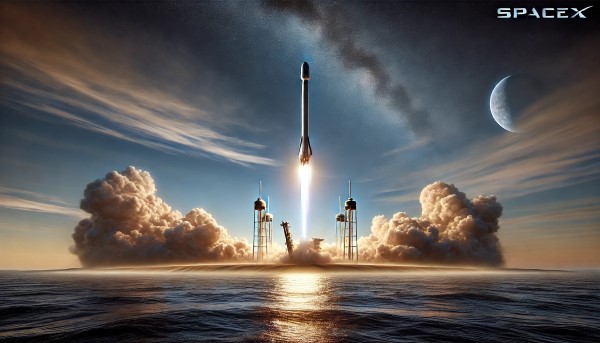SpaceX Launches Starship’s Fourth Flight of 2024, Opts for Booster Splashdown

SpaceX Launches Starship’s Fourth Flight of 2024, Opts for Booster Splashdown
SpaceX continued its impressive 2024 launch campaign with the fourth flight of its Starship system early this morning. The mission, conducted from the company’s Starbase facility in Boca Chica, Texas, marked a strategic shift in operations, as the booster stage of the spacecraft was intentionally splashed down into the Gulf of Mexico rather than being caught for reuse.
A Departure from Routine Reusability
SpaceX is renowned for its focus on reusability, often landing boosters on platforms or at designated ground sites. This time, however, the aerospace firm chose to conduct a controlled ocean splashdown of the Super Heavy booster. According to SpaceX representatives, this approach allowed engineers to focus on collecting valuable data about the rocket’s performance during ascent and reentry.
The decision to forego catching the booster reflects SpaceX’s commitment to perfecting Starship’s overall reliability and performance. Engineers stated that understanding potential weak points in high-stress scenarios is essential to achieving the company’s long-term goals, including crewed lunar missions and eventual Mars colonization.
Key Mission Details
- Launch Time: 8:12 AM EST
- Launch Site: Starbase, Boca Chica, Texas
- Mission Objective: Suborbital test of Starship with data collection on thermal shielding and booster aerodynamics
- Outcome: Successful stage separation, followed by a planned ocean splashdown of the Super Heavy booster
The upper stage of Starship reached its target altitude and performed several complex maneuvers to test its flight control systems before safely descending into the ocean.
Pushing the Limits of Innovation
The fourth launch this year highlights the accelerated pace of Starship testing. Each flight introduces new challenges, bringing SpaceX closer to its goal of creating a fully reusable spacecraft capable of interplanetary travel.
Elon Musk, CEO of SpaceX, shared on social media, “Deliberate splashdown allows us to push boundaries safely. Data from today’s flight will be instrumental in refining Starship’s design.”
While some critics question the environmental impact of splashdowns, SpaceX assures that its operations comply with strict regulations and aim to minimize ecological disruption.
What’s Next for Starship?
SpaceX’s testing schedule for Starship remains aggressive, with another test flight planned before year’s end. Future missions will likely return to the booster-catching system, with the ultimate goal of demonstrating Starship’s ability to deliver large payloads and crew safely into orbit and beyond.
As SpaceX continues to make strides, the aerospace industry and space enthusiasts alike are keeping a close eye on every milestone. This morning’s flight, while unconventional in its recovery method, serves as another leap toward transforming space travel into a routine and sustainable endeavor.





